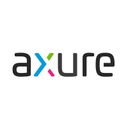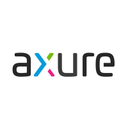Axure vs Maze (2025 Comparison)

Axure offers advanced prototyping features for creating detailed, interactive designs. It's ideal for complex projects, though it requires a learning curve to master its full potential.
- Advanced prototyping features
- Comprehensive customer support
- Scalable for large teams
- Steep learning curve
- Complex interface for beginners
Free plan?
NoStarting price
$25 per month per user
Maze provides user-friendly testing tools that deliver actionable insights. It's perfect for teams focused on user feedback, with seamless design import and intuitive interface.
- User-friendly interface
- Excellent user testing tools
- Seamless design import
- Limited prototyping features
- Higher cost for large teams
Free plan?
YesStarting price
$99 per monthWhat is Axure?
Axure is a powerful prototyping tool that allows designers to create interactive wireframes and prototypes. It helps users visualize complex ideas and test user interactions before development. With Axure, you can create detailed and dynamic prototypes that mimic real-world applications, making it easier to communicate design concepts to stakeholders. It is particularly beneficial for UX designers who need to create high-fidelity prototypes to test user flows and interactions.
What is Maze?
Maze is a user testing platform that enables designers and product teams to gather actionable insights from real users. It helps in validating design decisions by providing data-driven feedback on prototypes. Maze allows you to conduct usability tests, surveys, and gather user feedback seamlessly, making it an essential tool for iterative design processes. It is particularly useful for teams looking to optimize their designs based on real user interactions and feedback.
Pros and Cons of Axure vs Maze

Pros & Cons of Axure
- Axure offers a wide range of advanced prototyping features that allow designers to create detailed and interactive prototypes. This makes it an excellent choice for complex design projects.
- Axure provides extensive customer support, including tutorials and community forums, which are invaluable for new users looking to master the tool.
- Axure is designed to scale with large design teams, offering features that support collaboration and complex project management.
- Axure has a steep learning curve, which can be challenging for beginners. It requires time and effort to master its comprehensive features.
- The interface of Axure can be overwhelming for new users, with a multitude of features and options that may not be immediately intuitive.

Pros & Cons of Maze
- Maze offers a user-friendly interface that makes it easy for teams to set up and conduct user tests without extensive training.
- Maze provides comprehensive user testing tools that allow teams to gather actionable insights and optimize their designs based on real user feedback.
- Maze allows for seamless design import from popular design tools, making it easy to start testing and gathering feedback quickly.
- Maze's prototyping features are limited compared to dedicated prototyping tools, which may not meet the needs of teams requiring detailed prototypes.
- Maze can become costly for large teams, as its pricing model scales with team size and usage, potentially impacting budget considerations.
Axure vs Maze: At A Glance
Value to Price
Axure offers a robust set of features for prototyping, making it a great value for designers who need detailed and interactive prototypes. Its pricing reflects the depth of functionality it provides. Maze, on the other hand, offers excellent value for teams focused on user testing and feedback, with a pricing model that scales well with team size. If you are looking for a tool that offers great value for user testing, Maze is the better choice.
Ease of Use
Axure has a steeper learning curve due to its comprehensive features, which might be overwhelming for beginners. However, once mastered, it becomes a powerful tool for creating complex prototypes. Maze is designed with simplicity in mind, making it easy for teams to set up and conduct user tests without extensive training. If ease of use is a priority, Maze is the more user-friendly option.
Functionality
Axure excels in functionality, offering advanced prototyping features that allow for detailed and interactive designs. It is ideal for UX designers who need to create high-fidelity prototypes. Maze provides strong functionality in user testing, offering tools for gathering and analyzing user feedback effectively. If your focus is on prototyping, Axure is the better choice, while Maze is ideal for user testing.
Scalability
Axure is scalable for large design teams, offering features that support complex projects and collaboration. Maze also scales well, particularly for teams that need to conduct extensive user testing across multiple projects. Both tools offer scalability, but Maze is particularly suited for teams focused on iterative design and testing processes.
Integrations
Axure offers a range of integrations with design and development tools, enhancing its functionality in the design process. Maze integrates seamlessly with popular design tools, making it easy to import prototypes and gather feedback. If integrations are a key factor, Maze offers more seamless integration options for user testing.
Customer Support
Axure provides comprehensive customer support, including tutorials and community forums, which are helpful for new users. Maze offers responsive customer support, with resources that help teams get the most out of their user testing efforts. Both tools offer strong support, but Axure's extensive resources make it slightly more advantageous for new users.
Security
Axure ensures data security with robust measures, making it a reliable choice for teams handling sensitive design data. Maze also prioritizes security, ensuring that user data is protected during testing processes. Both tools offer strong security features, but Axure's focus on design data security makes it a preferred choice for design teams.
Overall Rating
Axure is a powerful tool for prototyping, offering advanced features for detailed design work. Maze excels in user testing, providing valuable insights for design optimization. Both tools have their strengths, but Maze's ease of use and integration capabilities give it a slight edge overall.
Axure vs Maze: A Detailed Breakdown of Key Features
Interactive Prototyping
Axure shines in interactive prototyping, offering a wide range of tools to create detailed and dynamic prototypes. I found it particularly useful for projects that require complex interactions and animations. Maze, while offering prototyping capabilities, focuses more on user testing, which might not provide the same level of detail as Axure. If your primary need is creating interactive prototypes, Axure is the tool to go for.
User Testing
Maze is a leader in user testing, providing comprehensive tools to gather and analyze user feedback. I appreciated how easy it was to set up tests and get actionable insights. Axure offers some user testing features, but they are not as extensive as Maze's. If user testing is your main focus, Maze is the superior choice.
Collaboration Tools
Both Axure and Maze offer collaboration tools, but Maze's features are more intuitive and user-friendly. I found it easier to share projects and gather team feedback with Maze. Axure's collaboration tools are robust but can be a bit complex for new users. If seamless collaboration is important, Maze is the better option.
Design Import
Maze excels in design import, allowing seamless integration with popular design tools. I found it straightforward to import designs and start testing. Axure also supports design import, but the process can be more cumbersome. If you frequently import designs, Maze offers a smoother experience.
Feedback Collection
Maze's feedback collection tools are top-notch, providing detailed insights into user interactions. I was impressed by the depth of feedback I could gather. Axure offers feedback collection, but it is not as comprehensive as Maze's. For in-depth feedback collection, Maze is the tool to choose.
Analytics
Maze provides robust analytics tools, offering valuable insights into user behavior and test results. I found the analytics easy to understand and actionable. Axure offers analytics, but they are not as detailed as Maze's. If analytics are crucial to your process, Maze is the better option.
Pricing Comparison of Axure and Maze
We’ve compiled the pricing tables and highlighted the key features of both Axure and Maze to aid in your decision-making process. Let’s explore what each platform has to offer.

Axure Pricing Plans
- Unlimited reviewers to gather comprehensive feedback.
- Advanced prototyping for detailed design work.
- Wireframes, diagrams, and documentation for clarity.
- Unlimited projects on Cloud for seamless access.
- Revision history to track changes over time.
- Team project hosting on Cloud for shared access.
- Automatic history of check-ins with notes for transparency.
- Export any revision for version control.
- User management and single sign-on for security.
- Company domain for internal member use.
- Private or on-prem security for data protection.
- Contact us for security and licensing options.

Maze Pricing Plans
- Up to 7 blocks for comprehensive usability testing.
- 1 study per month to kickstart your research journey.
- 5 seats to collaborate with your team.
- Ideal for individuals starting with usability testing.
- AI question rephrasing to enhance survey quality.
- Conditional logic for dynamic survey paths.
- PRO templates for professional-grade research.
- CSV export for data analysis and reporting.
- Open card sorting for user-centric information architecture.
- Tree testing for evaluating site structure.
- Variant Comparison for A/B testing and optimization.
- Advanced panel targeting criteria for precise participant selection.
Our Rating Methodology
We rigorously evaluate each prototyping and user testing tool, focusing on key aspects like functionality, ease of use, and scalability. By analyzing user feedback and testing each feature, we ensure our recommendations are accurate and reliable. Each factor is weighted to provide a comprehensive final rating, helping you choose the best tool for your needs.
Axure or Maze: Which One Matches Your Business Needs?
Choose Axure If You Need ...
- Advanced prototyping needs
If you are a designer working on complex projects that require detailed and interactive prototypes, Axure is the ideal choice. Its advanced prototyping features allow you to create high-fidelity designs that accurately represent user interactions.
- Comprehensive support resources
If you value extensive support resources, including tutorials and community forums, Axure is the better option. Its comprehensive support network helps new users master the tool and get the most out of its features.
Choose Maze If You Need ...
- User testing focus
If your primary focus is on user testing and gathering actionable insights, Maze is the superior choice. Its user-friendly interface and comprehensive testing tools make it easy to conduct tests and optimize designs based on real user feedback.
- Seamless design import
If you frequently import designs from popular design tools, Maze offers a smoother experience. Its seamless design import capabilities allow you to start testing and gathering feedback quickly, enhancing your design process.
Frequently Asked Questions
 Which tool is better for prototyping, Axure or Maze?
Which tool is better for prototyping, Axure or Maze?
 Is Maze suitable for large teams?
Is Maze suitable for large teams?
 Does Axure offer good customer support?
Does Axure offer good customer support?
 Can Maze integrate with popular design tools?
Can Maze integrate with popular design tools?
 Which tool offers better value for money?
Which tool offers better value for money?
 Is Axure difficult to learn?
Is Axure difficult to learn?

Anastasia Belyh
Anastasia Belyh is a senior tech writer with over 15 years of experience in marketing, sales, and business software. Having worked in investment banking, management consulting, and founded multiple companies, her in-depth knowledge and hands-on expertise make her software reviews authoritative, trustworthy, and highly practical for business decision-makers.



